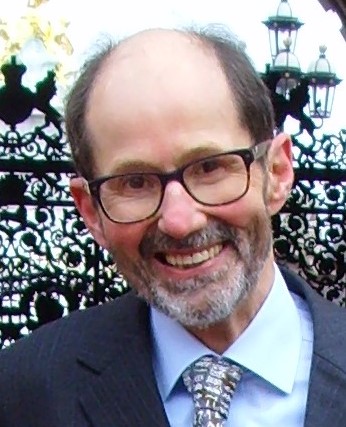
Peter Taylor-Gooby
In May, former professor of sociology at the University of Sussex Peter Saunders published a controversial post on Conservative Home.
There were many claims in this piece, but the overall thrust was that a lack of social mobility in Britain is a “myth”. Social mobility is alive and well, he argues.
Saunders, who is now emeritus professor at Sussex, acknowledges middle class children are twice as likely to get middle class jobs as working class children – but not because of “class privileges and blockages”.
Rather, he says, there is strong association between parents’ and children’s achievements “because talent is to a considerable extent passed on in the DNA children inherit”.
He then turns to university admissions.
Saunders says “unequal educational achievement by children from different social class backgrounds is largely (though not entirely) explained by differences in average ability levels”.
This, in turn, leads him to two further conclusions. First, that “top universities do not discriminate against lower-class applicants”.
Second, that “the reason privately-educated kids get into Oxbridge in disproportionate numbers is that they are, on average, brighter”.
‘Different lines of argument?’
This is a direct challenge to the many politicians and academics who have commented on the fact that, although private school students constitute less than a tenth of school students in the UK, they take up round about half the places at the most prestigious universities.
It is an important topic because we know access to such universities is associated with entry to high-paying elite occupations and people in those positions exert a disproportionate influence on our national life.
The dominant viewpoint is that the skewed access to Russell Group and Oxbridge is prima facie evidence of unequal opportunities.
Of course, we know that private school students are more likely to enter sixth forms than state school students. They make up about a third of all candidates with three A or A* A-levels – the pool from which prestigious universities for the most part draw.
This would explain some, but not all, of the discrepancy since private school students still take half as many entry places again compared with their pool membership.
In fact, most commentators would not dispute this evidence but would instead point to different lines of argument.
‘Inflated A-level scores at private schools’
First it is worth noting that, in this debate, the two sides are often talking past each other, pointing to different streams of evidence and ignoring the positions of the other side.
Those who claim unfairness in the skew in recruitment towards private school students generally do not dispute the evidence on performance and on standards within private schools offered by those who champion private schools.
Instead, they interpret this evidence within a broader social context. Namely, that superior A-level achievement and individual motivation are affected by factors including home background, culture, social contacts, the environment provided by the school and the resources spent on their education.
It is the imbalance in these factors which explains the skew in results and in university entry.
But on the other side, the private school defenders focus on individual characteristics such as measured IQ or genetic make-up and pay little attention to social, environmental and cultural factors which may be associated with these differences.
One important strand of evidence is contained in the work of Smith and Naylor and others, who analyse education careers of state school and private school students once they have entered prestigious universities.
They reveal that degree performance “is significantly lower both for students who previously attended an independent school prior to university entry and for male students’ even when entry grades are taken into account”.
In other words, privately-schooled students on average enter prestigious universities at lower levels of ability than those from state schools – but somehow their A-level grades belie this.
If one treats the degree grades as the central issue (and presumably one does because they are the major justification for treating entry to these universities as the indicator of quality), then it seems that the A-level scores of private school students and men are inflated above their ability, relative to those attained by state school students and women.
It is significant that the differences include gender as well as entry grades.
If we understand gender in social terms, this reinforces the argument that social factors are important in private school recruitment.
If we stress a genetic component, this tends against the claim that the success of private school students is influenced by their genetic make-up.
Why should male gender in itself result in higher performance at A-levels, not sustained through university?
‘The role of environment in IQ and motivation’
Another point Saunders fails to consider is that school selection is complex. Many private schools use entrance exams but the dominant factor in entrance is simply parental ability to pay fees.
While means-tested bursaries exist, full-fee bursaries only apply to about one per cent of students and these are not all allocated by test scores.
Average fees exceed average incomes. Their students are disproportionately drawn from the upper reaches of the income distribution – 60 percent of them from the top one-hundredth (Green et al 2018).
Private schools select a particular social class group and this is the most important feature of their entry system, not the ability tests which play a more limited role.
The relation between IQ scores and success in many areas of life is widely demonstrated, perhaps most extensively discussed in the controversy surrounding Herrnstein and Murray’s 1994 book “The Bell Curve” on American society, which argued that differences in success in life could be linked to IQ.
Again there is much to say, but one important argument surrounds the question of what IQ tests measure.
One reason why such tests now tend to be used less in measuring ability is that results are strongly associated with social and environmental factors, particularly social class. This has perhaps been most authoritatively discussed in Nesser et al (1996).
Let’s also talk about motivation. Saunders has elsewhere quoted research (Bond and Saunders 1999) that uses evidence of parental and individual assumptions about school students’ future career paths from the national Child Development Study.
It reveals that the more highly motivated students are those who expect and are expected to gain jobs in upper middle class professions.
In effect, the point is that students who expect to do well and are in an environment where they are well supported and where every expectation is that they will do well, do in fact do well.
The problem is, again, that this could equally be a social effect.
‘Private school alumni unaware of advantages’
But whatever the career success of many private school pupils is down to, we also know that the students themselves overwhelmingly attribute their success to their own ability and hard work.
They are often not aware of how privileged their upbringing and background has been.
For example, very few of the 175 young City high-fliers interviewed by Friedman and others acknowledged the part played by advantaged backgrounds in their own advance (Friedman and Laurison 2019; see also Hecht 2017).
The outcome is an elite that is to a considerable extent unaware of the part played by social factors in their own success. Instead, they are open to arguments that suggest school outcomes (and university entry) are evidence of individual rather than social characteristics.
This is an argument which will no doubt continue, not least because there is an extremely powerful lobby group defending private schools.
In the meantime, there is peer-reviewed research about degree grades out there which shows that the entry system to prestigious universities is not delivering the students best suited to benefit from that education.
By this criterion, women and state school students are still under-represented – and this needs correction.
Peter Taylor-Gooby is research professor of social policy at the University of Kent. He is a Fellow of the British Academy, a founding academician at the Academy of Social Sciences and previously a Fellow of the Royal Society of Arts. He is also a former President of the British Association for the Advancement of Science, Sociology and Social Policy Section.
References
Bond, R. and Saunders, P. (1999) ‘Routes of success’ British Journal of Sociology, vol.50.
Friedman, S. and Laurison, D. (2019) The Class Ceiling: Why it Pays to be Privileged, Policy Press.
Hecht K (2017) A Sociological Analysis of Top Incomes and Wealth. http://etheses.lse.ac.uk/3699/.
Herrnstein and Murray, C. (1994) The Bell Curve, Free Press.
Jacoby, R., Glauberman, N., eds. (1995). The Bell Curve Debate: History, Documents, Opinions. New York: Times Books.
Neisser, U., Boodoo, G., Bouchard, T., Boykin, A., Brody, N., Ceci, S., Halpern, D., Loehlin, J., Perloff, R., Sternberg, R, Urbina, S. (1996). ‘Intelligence: Knowns and Unknowns’, American Psychologist. 51 (2): 77–101. doi:10.1037/0003-066X.51.2.77
Smith J. and Naylor R. (2001) ‘Determinants of Degree Performance’, Oxford Bulletin of Economics and Statistics, 2001, vol. 63, pp. 29-60.
Wakeling and Savage, M. (2015) ‘Entry to elite positions and the stratification of higher education in Britain’, Sociological Review, 62, 2 290-320.



